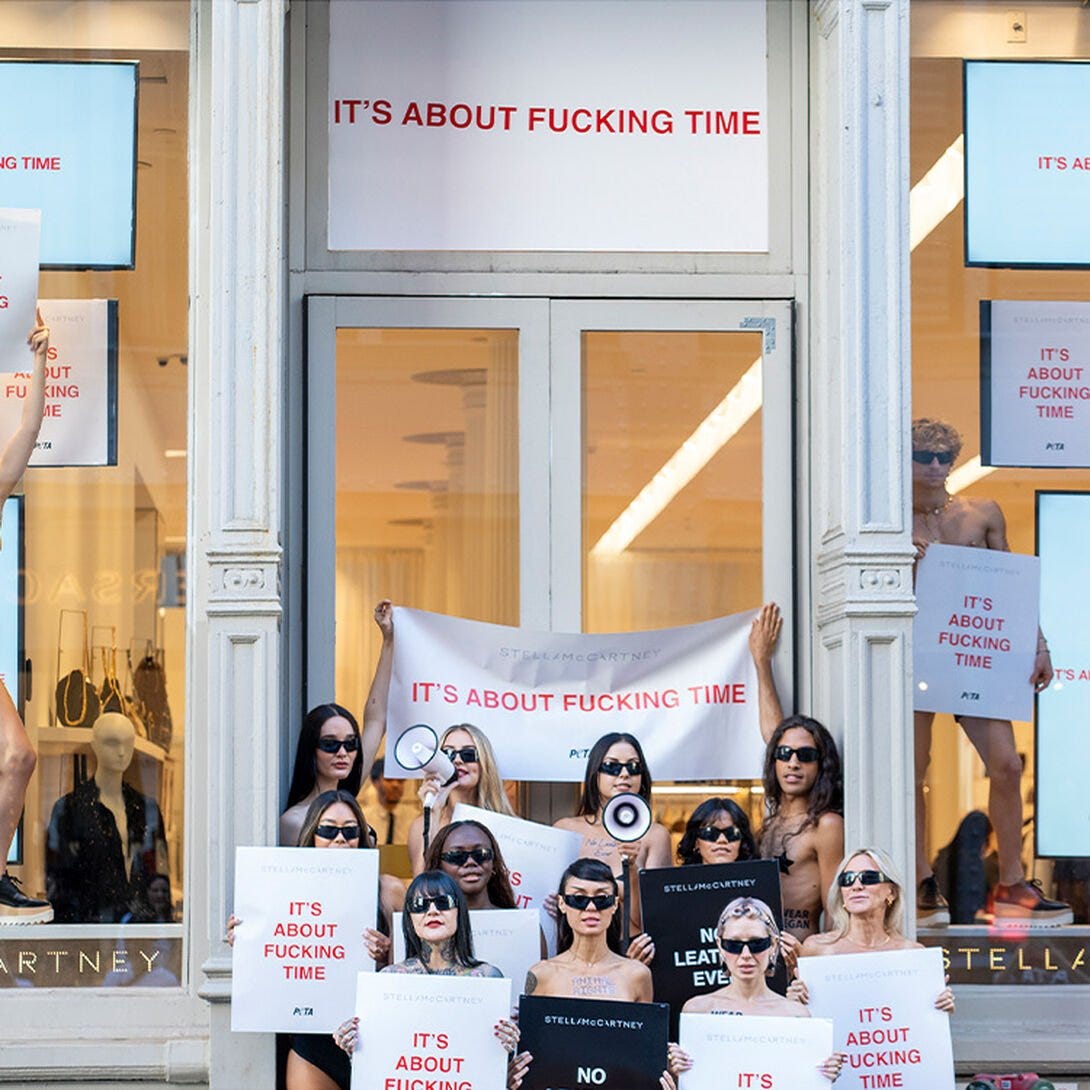Don't Say Green. Do It.
New Communication Strategies: Here’s How Green Fashion Marketing Is Evolving. Nuove Strategie di Comunicazione: ecco come il Marketing della Moda Green sta cambiando.
"You can call them emotions, if you like"– as my dear Lucio Battisti used to say in his famous Italian song. My foreign friends may not know it, but it perfectly captures what I’m about to discuss—so allow me this Italian-flavored introduction…
In recent years, we’ve seen an explosion of sustainability messages in fashion: recycled materials, ethical production, reduced environmental impact. But today, the most forward-thinking brands understand that to maintain credibility, they need to shift gears. With greenwashing more widespread than ever, the real challenge is to adopt new strategies—ones that are stronger, more concrete, and sometimes even counterintuitive.
“Tu chiamale se vuoi, emozioni” diceva il mio caro Lucio Battisti in una sua rinomata canzone, che gli amici stranieri probabilmente non conosceranno, ma che rende bene ciò di cui sto per parlare, perciò concedetemi questa intro dal sapore italiano…
Negli ultimi anni, abbiamo assistito a un’esplosione di messaggi sulla sostenibilità nella moda: materiali riciclati, produzione etica, impatto ambientale ridotto. Ma oggi, i brand più innovativi hanno bisogno di cambiare rotta se vogliono acquisire credibilità. Contrastare il greenwashing ormai diffusissimo è diventata una sfida per la quale bisogna adottare nuove strategie più solide, concrete e anche controintuitive.
Why is this happening? Because fashion, above all, is about desire. If sustainability is perceived as an obligation rather than an added value, it risks losing the emotional connection that makes fashion special in the first place.
Perché sta succedendo questo? Perché la moda, prima di tutto, è desiderio. Se il pubblico percepisce la sostenibilità come un dovere piuttosto che come un valore aggiunto, rischia di perdere il coinvolgimento e l’appeal che la contraddistingue rendendola qualcosa di speciale.
The Paradox of Sustainable Marketing
Let’s start normalizing the idea that the “new” fashion— which, in reality, is nothing new if we look back to its origins— is inherently ethical and sustainable. Upholding transparency and high sustainability standards shouldn’t be considered extraordinary; it should be the norm, something expected. If anything, the opposite should raise red flags and make us question what’s wrong.
Il Paradosso del Marketing Sostenibile
Iniziamo a normalizzare il fatto che la “nuova” moda (in realtà nulla di nuovo se rivolgiamo lo sguardo alle origini) sia etica e sostenibile di default. Rispettare trasparenza e standard di sostenibilità elevati non rappresenta qualcosa di speciale, ma piuttosto di scontato e dovuto. Semmai il contrario ci dovrebbe far notare che c’è evidentemente qualcosa che non va.
A perfect example is Reformation. The brand is widely recognized for its environmental commitment, yet its marketing is built on a light, cool, and effortlessly seductive storytelling. There’s no moralizing message, no guilt-driven appeal to the consumer— just a seamless integration of sustainability into personal expression.
Un esempio perfetto è Reformation. Il brand è riconosciuto per il suo impegno ecologico, ma se osserviamo il suo marketing è costruito su uno storytelling leggero, cool e seducente. Non c’è nessun messaggio paternalistico, nessun appello al senso di colpa del consumatore, piuttosto una totale armonia nell’espressione personale.
The focus is on what the customer truly wants: style, the perfect fit, and sex appeal. Sustainability is there, but as an inherent value seamlessly integrated into the product— not as the main message in communication.
Il focus è su ciò che il cliente vuole: stile, vestibilità perfetta, sex appeal. La sostenibilità è presente, ma come valore sottinteso, integrato nel prodotto, e non come argomento principale della comunicazione.
Another example of a similar approach is GANNI. The Danish brand has embraced sustainability without making it the central focus of its communication. Instead of promoting its environmental commitment in a moralistic way, GANNI focuses on fresh, ironic, and aspirational storytelling, placing style, creativity, and a strong sense of community at the forefront.
Like Reformation, GANNI doesn’t ask consumers to choose between style and responsibility—it makes them coexist naturally and irresistibly.
Lesson: Stop promoting sustainability as a niche concept and start making it the norm.
Un altro esempio di approccio simile è GANNI. Il brand danese ha abbracciato la sostenibilità senza renderla il focus centrale della sua comunicazione. Invece di promuovere il proprio impegno ambientale in modo moralistico, GANNI si concentra su uno storytelling fresco, ironico e aspirazionale, mettendo al centro lo stile, la creatività e il senso di comunità.
Come Reformation, GANNI non chiede ai consumatori di scegliere tra stile e responsabilità—li fa coesistere in modo naturale e irresistibile.
Lezione: Smettere di spingere la sostenibilità come un concetto di nicchia e farla diventare la norma.
The Power of Community
Another example of strategic change comes from The RealReal, the luxury resale giant, which has chosen to expand its presence on Substack, the emerging platform for independent newsletters. By doing so, The RealReal is using Substack to build a community around circular fashion. Smart move!
Il Potere della Community
Un altro esempio di cambiamento strategico arriva da The RealReal, il gigante del resale di lusso, che ha scelto di espandere la sua presenza su Substack, la piattaforma emergente di newsletter indipendenti. The RealReal sta così utilizzando Substack per costruire una community attorno alla moda circolare. Mossa furba!
The communication of the future will no longer be just advertising; it will be open conversation. Brands are no longer just fashion producers—they are storytellers who bring life, soul, and emotion to their creations.
La comunicazione del futuro non sarà solo pubblicità, ma conversazione aperta. I marchi non sono più solo produttori di moda, ma narratori di storie che danno vita, anima, emozione alle loro creazioni.
When Activism Isn’t Enough
If there’s one brand that has consistently championed the cause of sustainable fashion, it’s undoubtedly Stella McCartney. With her unmistakably bold, sometimes aggressive, and provocative style—yet always coherent—she has stood firm in her commitment to sustainability.
Quando l’Attivismo non Basta
Se c’è un brand che ha portato avanti la causa della moda sostenibile con coerenza, è senza dubbio Stella McCartney. Con il suo stile chiaramente, piuttosto aggressivo, incisivo, provocatorio alle volte, ma coerente senz’altro.
Yet, her latest campaign on bird extinction has left some puzzled. While Stella McCartney's campaign raises awareness about biodiversity loss, the message fails to actively engage the audience.
Eppure, la sua ultima campagna sulla scomparsa degli uccelli ha lasciato un pò perplessi. La campagna di Stella McCartney sensibilizza sulla perdita di biodiversità, ma il messaggio non coinvolge attivamente il pubblico.
What might be the problem? The message, while important, didn’t create a strong emotional connection with the audience. The crucial step is missing: providing people with tangible tools to make a difference. The audience— or, as my business strategy advisor would put it, the market— is the true protagonist.
Today, the public doesn’t just want to be informed about problems; they want to feel like they’re part of the solution. Brands need to go beyond raising awareness and offer tangible, interactive, and engaging actions.
Activism only works if it generates participation. It’s not enough to simply talk about it; the experience needs to be lived. It’s not a way to boost equity or appear cool—it’s a tool for the greater good, a shared commitment to principles and values.
Quale può essere il problema? Il messaggio, pur importante, non ha creato una connessione emotiva forte con il pubblico. Manca il passaggio fondamentale: dare alle persone strumenti concreti per fare la differenza. Il pubblico, o meglio il mercato come direbbe il mio business strategy advisor, è il nostro protagonista.
Oggi, il pubblico non vuole solo essere informato sui problemi: vuole sentirsi parte della soluzione. I brand devono andare oltre la sensibilizzazione e offrire azioni tangibili, interattive, coinvolgenti.
L’attivismo funziona solo se genera partecipazione. Non basta dire, bisogna far vivere l’esperienza. Non è un modo per rinforzare l’equity o sentirsi cool, ma uno strumento per il bene comune, una condivisione di principi e valori.
New Ethical Strategy of the Future
Some key points on how the new communication in responsible fashion is shaping up:
What’s the Impactful Communication Strategy?
Why the Aspirational Model Works?
Why The Newsletter Move is Brilliant?
Keep reading with a 7-day free trial
Subscribe to Ethical Style Lab to keep reading this post and get 7 days of free access to the full post archives.











